What is Get to Know Your Customers Day and Why Shopify Brands Should Care
Think your customers know your brand?
Flip that.
How well do YOU know them?
Great online experiences begin with understanding who you’re selling to.
“Get to Know Your Customers Day” isn’t just a feel-good hashtag; it’s your quarterly reminder to stop shouting into the void and start listening.
For Shopify brands, it’s the perfect chance to gather zero-party data (customer-shared details), run quick polls, spark conversations, and turn insights into action. When done right, this day becomes less about marketing fluff and more about building smarter, more human-first businesses.
However, before you begin planning your campaigns or surveys, let’s take a closer look at what this day truly represents and why it holds a surprisingly powerful edge for modern DTC brands.
What is Get to Know Your Customers Day?
Get to Know Your Customers Day is observed four times a year: on the third Thursday of every January, April, July, and October.
Originally rooted in the U.S. business landscape, the day serves as a quarterly nudge to brands: don’t just market to your customers, learn about them.
It’s a reminder that behind every ‘add to cart’ click is a real human being with preferences, habits, quirks, and unmet needs.
For Shopify brands, this can mean taking a break from algorithm-chasing and curating a more personalized interaction.
Why “Know Your Customers Day” Should Be on Every Shopify Brand’s Radar
Growth doesn’t always come from more ads or bigger product launches. Often, it comes from something simpler, like knowing your customers better than your competitors do.
Deep Understanding Drives Loyalty (Not Discounts)
Loyalty isn’t automatic—it’s earned through personalized experiences rooted in real customer understanding.
Most e-commerce brands are focused on acquiring new customers, but the real growth lies in retention. And that begins with understanding your customers beyond the surface level.
It’s not just about knowing their names or order numbers; it’s about uncovering,
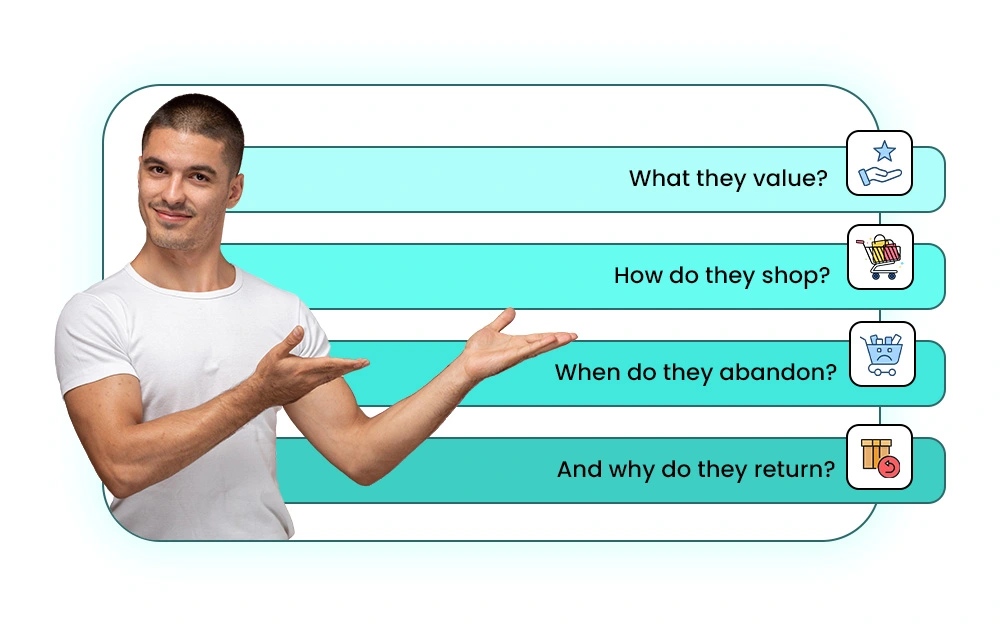
This is where Shopify customer data becomes gold. Segmenting users by behavior, AOV, frequency, and category preference gives you the clarity to craft truly personalized experiences.
According to research from Accenture, 75% of consumers are more likely to buy from brands that recognize them by name, recommend options based on past purchases, or know their purchase history.
Feedback Isn’t Just Polite—It’s Profitable
Too many brands collect reviews and run NPS surveys, then do nothing with the insights. But when you listen and act? You fix what’s broken, double down on what’s working, and start building products and experiences your customers want. That’s how feedback becomes a growth tool—not just a checkbox.
A study reported by NumberAnalytics shows that companies that actively respond to customer feedback experience a 25–30% increase in customer retention, as customers feel valued and understood, transforming feedback into real brand loyalty.
Why Emotional Connection Is the Secret to Customer Retention
A lot of Shopify brands assume their top spenders are their most loyal fans. But loyalty isn’t just about how much someone spends, it’s about how connected they feel.
Do your customers engage with you after they’ve bought something? Are they telling their friends about your brand, opening your emails, or watching your stories?
These are signs of a deeper relationship.
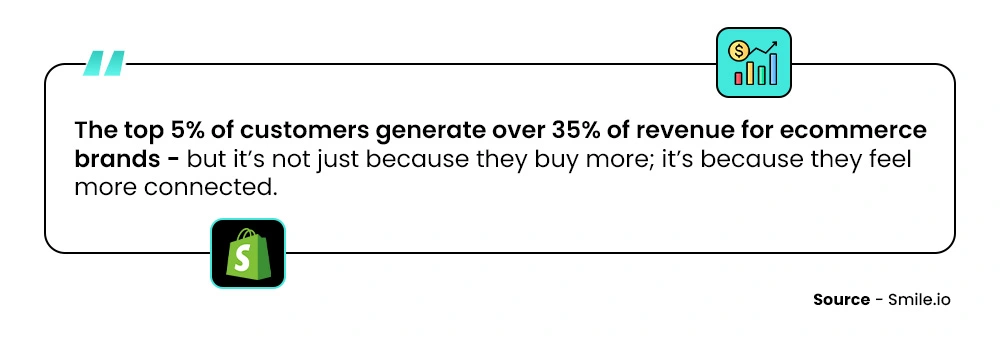
The takeaway is simple: People remember how your brand makes them feel. When you make them feel understood and valued, they’ll keep coming back, not just to shop, but to stay connected.
How to Celebrate “Get to Know Your Customers Day” the Right Way
1. Turn Customer Data into Behavioral Buckets
Tracking age or gender alone won’t get you far. Instead, Shopify brands should segment their customers by behavior, using patterns that show how they shop.
Here’s how to do it:
- Use Shopify analytics or Shopify Flow to group customers into behavioral types like:
-
- Serial Buyers – come back frequently, even for small purchases
- Abandoned Cart Repeaters – often leave without buying
- One-Time Big Spenders – buy once, but spend large
-
- Build mini customer personas for each group. Add insights like:
-
- What emotions drive their purchases?
- What values do they hold (e.g., convenience, style, sustainability)?
- What might stop them from buying again?
-
- Share these profiles with marketing, product, and customer service teams so everyone can craft customer-first strategies.
- Use this behavioral segmentation to personalize emails, landing pages, and offers.
- Monitor changes over time. Shopify’s built-in reports help you spot trends and shift personas when needed.
This approach helps Shopify store owners market smarter and tailor experiences that match real buyer behavior, not surface-level traits.
2. Use Post-Purchase Surveys to Extract Values
Understanding why someone buys is just as important as knowing what they buy. Use post-purchase surveys to tap into your customers’ values.
Here’s how to make it work:
-
- Ask 1–2 simple questions post-checkout, like:
-
- “What made you choose us today?”
- “What matters most when buying [product category]?”
-
- Use tools like KnoCommerce, Shopify Inbox, or Shopify Forms to automate survey collection.
- Ask 1–2 simple questions post-checkout, like:
- Look for recurring answers:
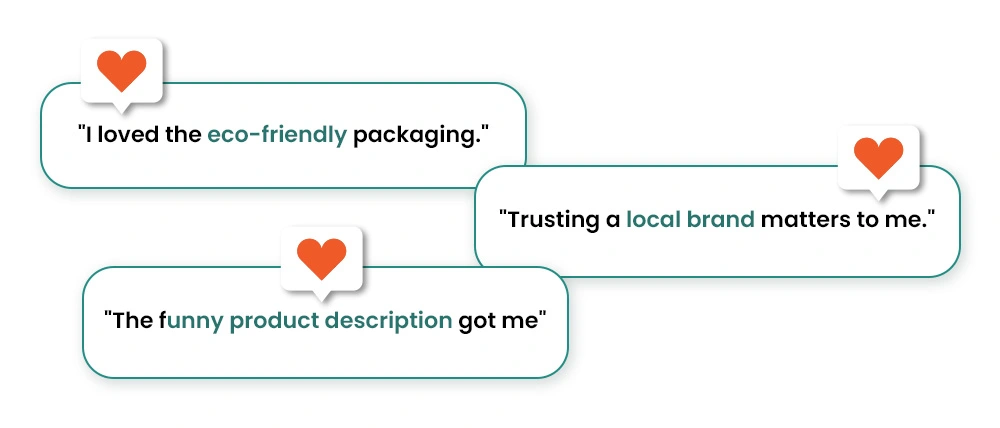
- Feed these customer intent signals into your personas and ad copy.
- Use insights to update your Shopify product pages, email subject lines, and even packaging language.
When you align your brand story with real Shopify buyer values, your messaging becomes stronger and more believable.
3. Cross-Reference Shopify Data with Social Insights
Don’t just stick to your Shopify data—see what your customers are doing on social media to understand them better.
Steps to try:
- Use Shopify customer lists and tags to find your regular buyers.
- Look at the influencers they follow and hashtags they like on Instagram, TikTok, or Pinterest.
- Compare this with what they’ve bought, how much they’ve spent, and any UTM data from past campaigns.
Example insights:
- A skincare customer who follows eco-beauty influencers.
- A home decor buyer who’s into DIY content.
Use this info to:
- Update your customer personas
- Write ad copy in their tone
- Fine-tune your influencer marketing
- Personalize emails and website visuals
This mix of Shopify data and social behavior helps you run more relevant and personalized campaigns.
4. Create Persona Cards for Internal Use
Persona cards are one-page profiles that represent your typical customer types. They help your team understand customer needs, behaviors, and buying motivations at a glance.
For each key customer group, build a simple Shopify persona card that includes:
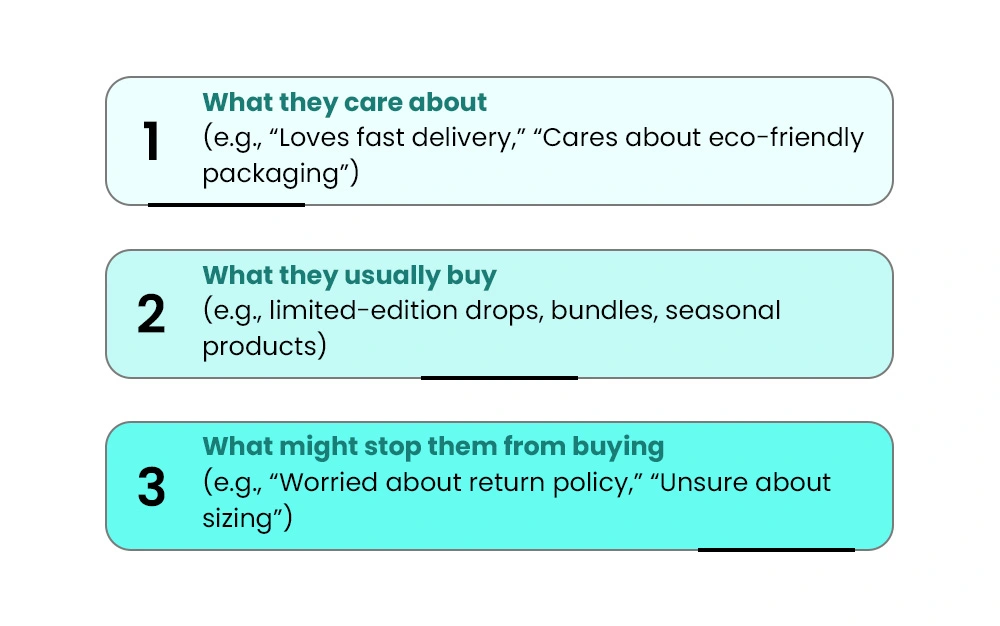
Share these with your marketing, customer support, and fulfillment teams to keep everyone aligned.
Persona cards make it easier to improve personalization, tailor messaging, and deliver a better customer experience across your Shopify store.
5. A/B Test Offers by Persona Segment
Once your customer personas are in place, test personalized offers for each one. Shopify’s targeting tools make this easy to manage and track.
Here’s a practical breakdown:
- Set up persona-specific offers like:
-
- “10% Off for New Parents”
- “Eco-Packaging Lovers Get Free Shipping”
- “Bundle Deals for Style Shoppers”
-
- Use Shopify Discounts or tools like Klaviyo or Seguno to run the A/B tests.
- Split test performance across: Click-through rates, Conversion rates, and Average order value
- Monitor metrics weekly. Which offer got more conversions? Which one boosted loyalty?
Use the results to:
- Refine personas (some traits may not impact conversion)
- Update your core Shopify landing pages
- Reshape your email flows and cart recovery messages
This test-and-learn cycle ensures you’re not just guessing what customers want; you’re proving it with real Shopify sales data.
6. Embed Real-Time Micro-Feedback to Personalize Experiences
Micro-feedback refers to quick, real-time check-ins that collect small bits of customer input at key moments, without overwhelming them.
Instead of long surveys, ask short questions throughout the shopping journey:
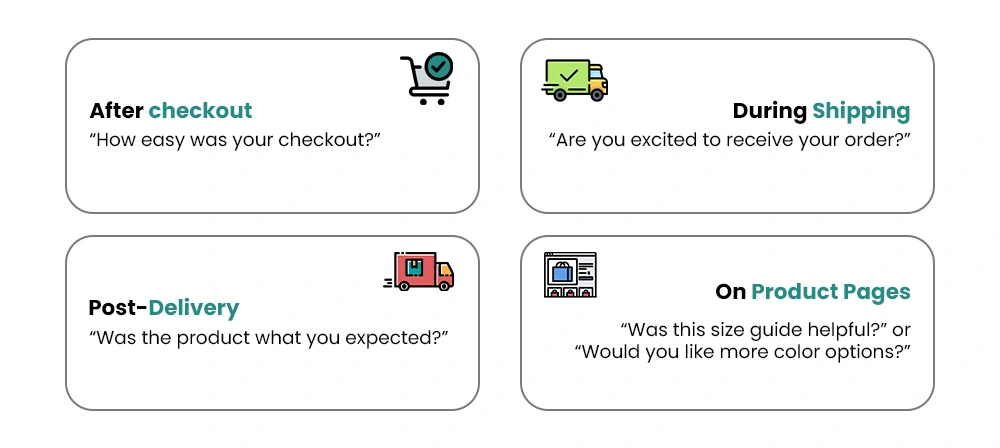
Use tools like Hotjar, Fera.ai, or Shopify apps to gather this real-time feedback seamlessly.
These tiny interactions help you:
- Improve the customer experience
- Reduce bounce rates
- Personalize email campaigns
- Offer smarter product recommendations
Each response helps you understand behavior better, so you can give shoppers what they want, exactly when they need it.
7. Launch a Repeat-Customer Flash Sale
Creating a time-limited flash sale exclusively for repeat customers is a smart way to boost Shopify customer retention and build deeper brand loyalty. Instead of focusing solely on new shoppers, reward those who’ve already shown trust in your brand.
Use these steps:
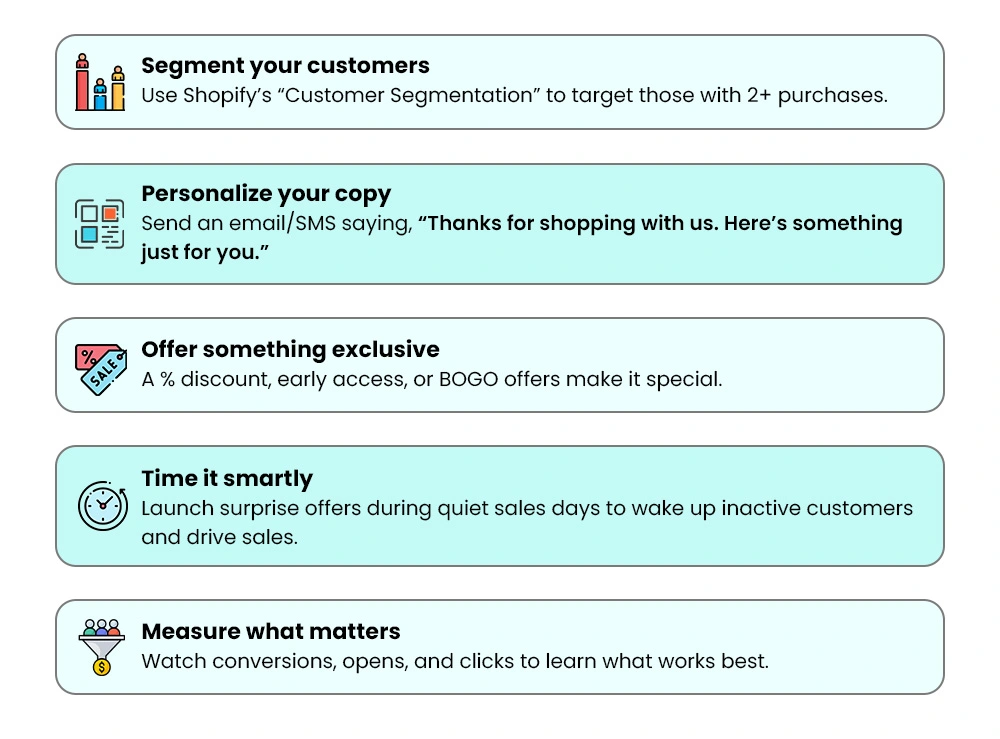
This flash sale isn’t just about revenue; it’s a gesture of appreciation that can turn customers into advocates.
8. Send Surprise Gifts in Packaging
This tactic taps into customer delight marketing. A small gift for customers shows appreciation, encourages repeat purchases, and creates moments worth sharing on social media.
Here’s how to do it:
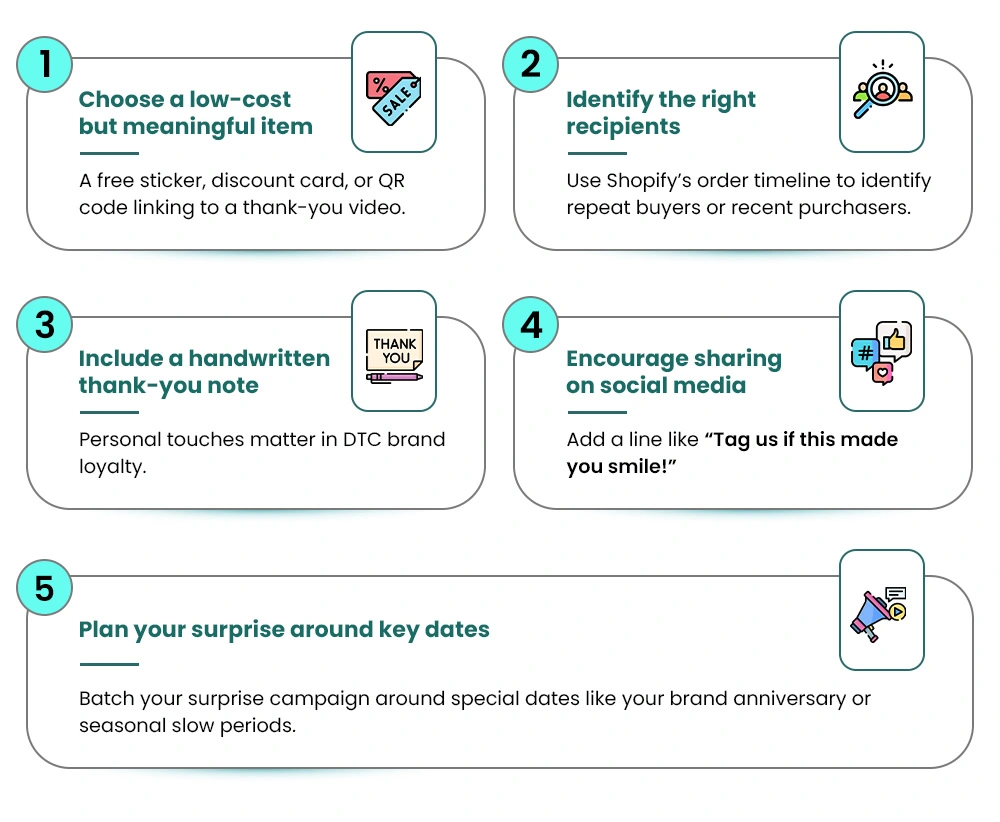
This tactic drives word-of-mouth marketing and will emotionally connect customers with your Shopify brand.
9. Launch a “Wishlist Celebration Campaign”
Turn your customers’ wishlist behavior into a retention and reward strategy:
Create an event where customers who’ve built a wishlist get early access or a discount.
Add gamification: “Complete your wishlist and win a surprise product!”
Use apps like Wishlist Plus to track engagement and sync data with Klaviyo for targeted email flows.
This strategy brings customers back to your store, keeps them browsing longer, and turns casual interest into real action. It also helps you make your marketing feel more personal and relevant.
10. Feature a “Customer Spotlight” Section
People trust people.
When your content shows real customers using your product, it doesn’t just “look nice”; it builds credibility.
It’s proof that your product works in real life. That kind of social proof? It can be the nudge that turns a scroll into a sale.
Here’s how to execute it:
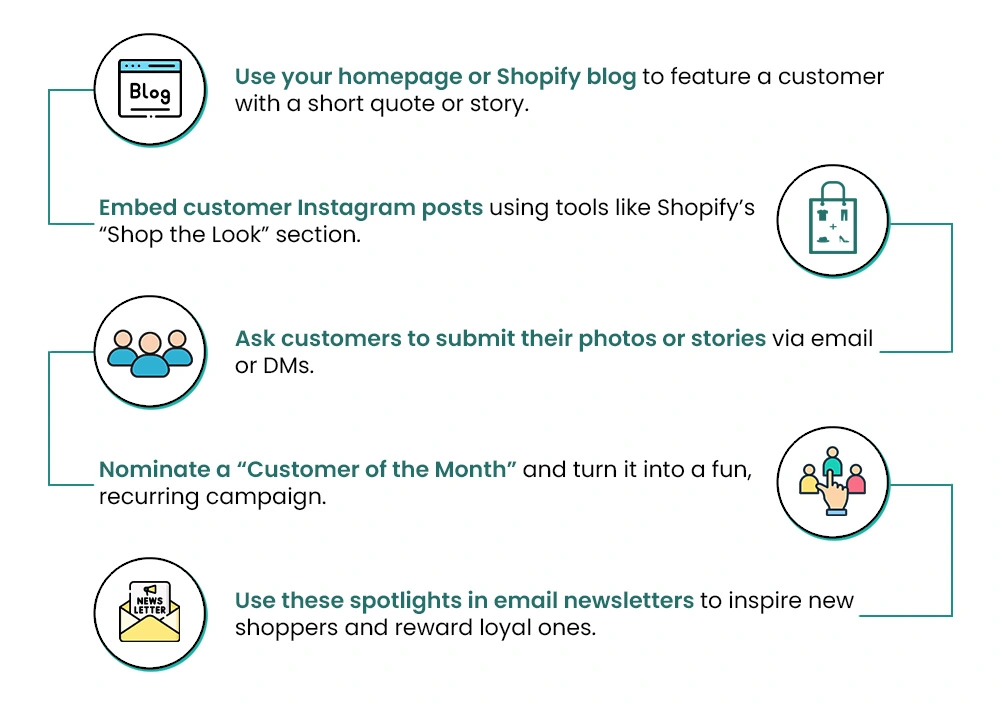
This strategy helps your Shopify store feel more personal, like a community that cares about its customers, and that can lead to long-term brand loyalty.
11. Create a “Style Story Generator” Instead of Just a Quiz
Instead of using the usual product quizzes, try a more fun and engaging approach, let shoppers tell a short story about their style.
For example:
- “What’s your dream Saturday like?”
- “Choose your adventure: Cozy indoors or spontaneous outdoors?”
- “Which vibe fits you: Minimalist, Bold, or Playful?”
Based on their answers, show them personalized product bundles—like curated outfits, themed accessories, or matching color sets.
This story-based format makes shopping feel more personal and enjoyable, especially for fashion, beauty, and lifestyle brands.
Utilize tools like Outgrow or Typeform to collect zero-party data while providing customers with a shareable experience.
12. Build a “Vote-to-Launch” Product Board
Get customers involved in product development before launch. Set up a dedicated Shopify page titled “Help Us Decide” where they can:

Add visual mockups to make it fun and tactile.
Use tools like CrowdSignal or embed a Shopify-compatible voting system. This not only creates anticipation but also ensures inventory is driven by real customer demand, improving sell-through rates and minimizing overstock.
Beyond One Day: A Year‑Round Customer Care Framework
Customer care isn’t just for busy seasons or launch days; it’s the everyday fuel that keeps your brand growing.
In 2025, brands that engage consistently are building stronger loyalty and trust.
Start by turning customer comments into practical changes.
- If people mention clunky navigation, fix it. If they love your sustainable packaging, lean into it, highlight it across your store.
- Check Shopify heatmaps and analytics to spot pain points (like rage clicks or abandoned flows).
- Use post-purchase surveys to identify areas that need improvement.
- When you fix something, promote it, “You asked, we listened” builds credibility.
- Loyalty doesn’t happen on autopilot. You need to stay in touch and make people feel valued. Here’s how:
- Launch a loyalty program using apps like Smile.io or Rivo—loyal customers often spend more.
- Keep newsletters fresh: mix updates with early access, product sneak peeks, or a touch of humor.
- Automate personal touches. Use tools like Klaviyo or Omnisend to send emails based on past behavior (like wishlists or repeat purchases).
Encourage your community to share how they use your products:
- Repost user content and turn it into a mini campaign.
- Offer small rewards for the best unboxings or creative uses.
And finally, use video to connect.
Quick TikToks, Instagram lives, or product demos help customers feel closer to your brand.
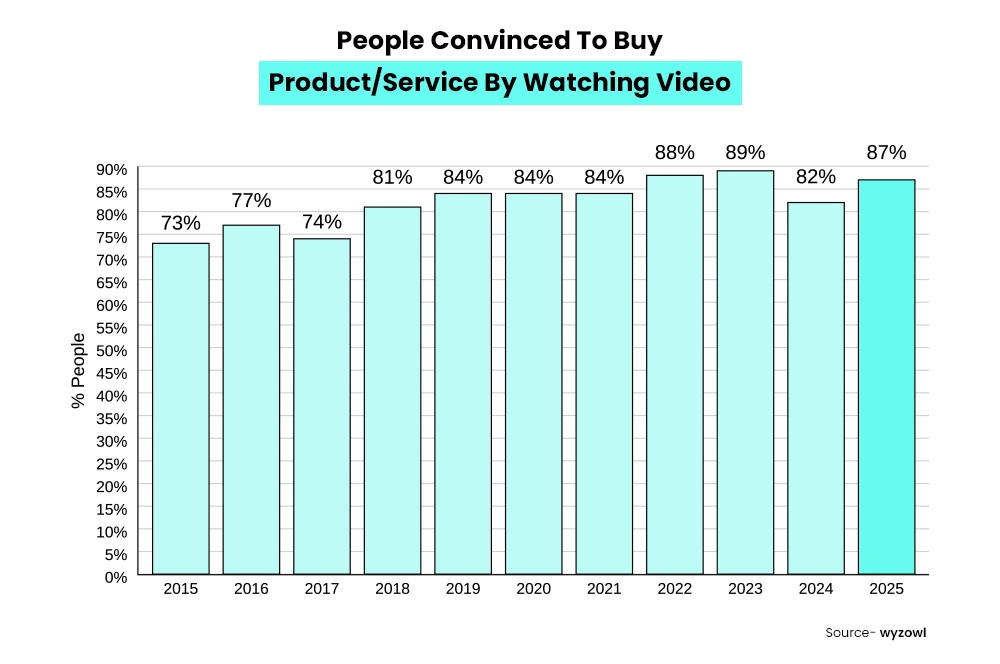
In 2025, 87% of buyers say they purchased after watching a brand video. Let your personality shine—it pays off.
Real-Life Examples from Shopify
How We at Mastroke Helped Wellness Extract..
Wellness Extract, a global wellness brand, wanted more than just a digital facelift. They needed a growth engine — scalable, reliable, and tailored to health-focused consumers.
So, they partnered with Mastroke to build a powerful Shopify ecosystem that turned challenges into a 400% sales surge.
The Challenge
Before the transformation, they faced:
- A need for multiple Shopify stores for different product verticals.
- Operational complexity in managing inventory, orders, and performance metrics.
- Concerns about website speed and stability during high-traffic periods.
The Solution
Our team stepped in with a full-suite strategy:
- Built 9 targeted Shopify stores, each tailored to specific regions and buyer personas.
- Developed a custom app to automate inventory, orders, and analytics across stores.
- Optimized site performance to handle large spikes in traffic without breaking speed.
The Results
The outcomes were not just impressive — they were business-defining:
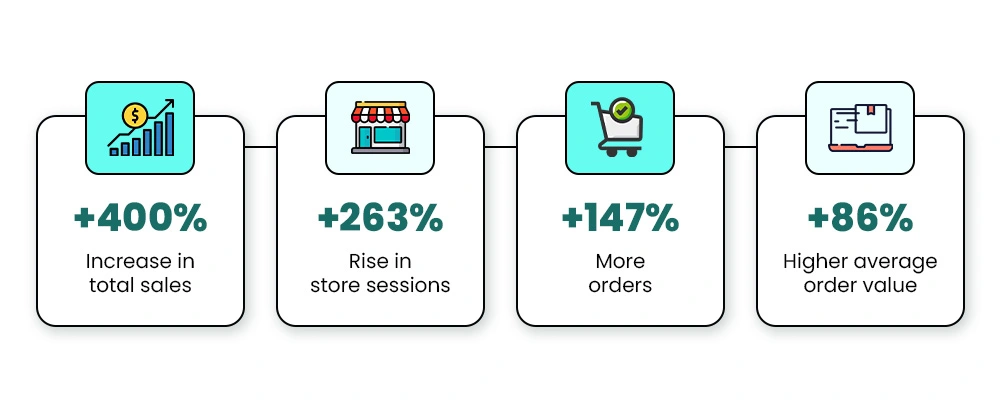
“With Mastroke’s Shopify expertise, we didn’t just scale. We multiplied,” — Wellness Extract Team
Want to see how this transformation unfolded in more detail?
Read the full case study here…
Parting Thoughts
Know Your Customers Day isn’t just a date on the calendar—it’s a wake-up call. The success of your Shopify store depends on how well you understand your customers.
When you know what they care about, how they shop, and why they stay loyal, you can build better journeys, smarter retention plans, and stronger connections.
At Mastroke, we’re Shopify-certified experts who help eCommerce brands turn customer insights into real growth. Whether you’re just starting or scaling fast, we’re here to guide you every step of the way.
Let’s build a store your customers love, together — Talk to Mastroke Now!
Frequently Asked Questions
1. What is Know Your Customers Day, and why does it matter for my Shopify store?
Get to Know Your Customers Day is a quarterly reminder to re-engage with your audience, gather feedback, and analyze behaviors. For Shopify brands, it’s a strategic checkpoint to realign your store experience with customer expectations.
2. How can I personalize the shopping experience on Shopify?
Use data-driven tools like Klaviyo, Postscript, or Shopify Flows to create personalized email campaigns, targeted upsells, and relevant product recommendations that reflect what your customers actually want.
3. Which Shopify metrics help me understand my customers better?
Key metrics include Repeat Purchase Rate, Customer Lifetime Value (CLV), Customer Retention Rate (CRR), and Net Promoter Score (NPS). These metrics offer deep insights into customer loyalty, satisfaction, and overall engagement.
4. Can working with a Shopify expert help me better understand my customers?
Absolutely. A Shopify-certified expert like Mastroke can implement advanced tools, analytics, and UX optimizations to help you gather and act on real customer insights—from first click to repeat conversion.